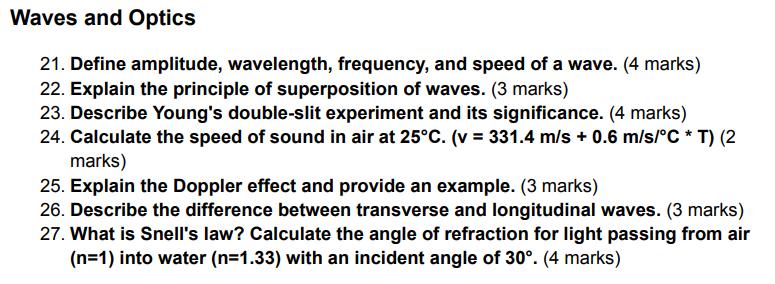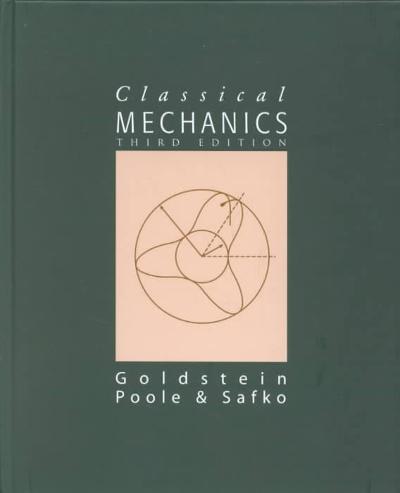Answered step by step
Verified Expert Solution
Question
1 Approved Answer
Waves and Optics 21. Define amplitude, wavelength, frequency, and speed of a wave. (4 marks) 22. Explain the principle of superposition of waves. (3


Waves and Optics 21. Define amplitude, wavelength, frequency, and speed of a wave. (4 marks) 22. Explain the principle of superposition of waves. (3 marks) 23. Describe Young's double-slit experiment and its significance. (4 marks) 24. Calculate the speed of sound in air at 25C. (v = 331.4 m/s + 0.6 m/s/C * T) (2 marks) 25. Explain the Doppler effect and provide an example. (3 marks) 26. Describe the difference between transverse and longitudinal waves. (3 marks) 27. What is Snell's law? Calculate the angle of refraction for light passing from air (n=1) into water (n=1.33) with an incident angle of 30. (4 marks) 28. Explain the concept of diffraction and its applications. (3 marks) 29. Describe the properties of laser light. (3 marks) 30. What is the focal length of a convex lens with a radius of curvature of 20 cm? (Use the lens maker's formula) (3 marks)
Step by Step Solution
There are 3 Steps involved in it
Step: 1

Get Instant Access to Expert-Tailored Solutions
See step-by-step solutions with expert insights and AI powered tools for academic success
Step: 2

Step: 3

Ace Your Homework with AI
Get the answers you need in no time with our AI-driven, step-by-step assistance
Get Started


